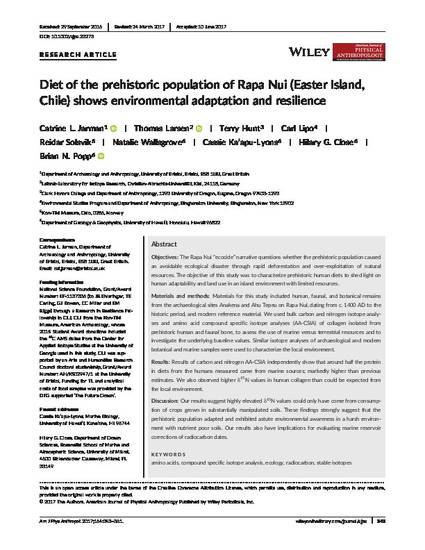
- amino acids,
- compound specific isotope analysis,
- ecology,
- radiocarbon,
- stable isotopes
Objectives: The Rapa Nui “ecocide” narrative questions whether the prehistoric population caused an avoidable ecological disaster through rapid deforestation and over-exploitation of natural resources. The objective of this study was to characterize prehistoric human diets to shed light on human adaptability and land use in an island environment with limited resources.
Materials and methods: Materials for this study included human, faunal, and botanical remains from the archaeological sites Anakena and Ahu Tepeu on Rapa Nui, dating from c. 1400 AD to the historic period, and modern reference material. We used bulk carbon and nitrogen isotope analy- ses and amino acid compound specific isotope analyses (AA-CSIA) of collagen isolated from prehistoric human and faunal bone, to assess the use of marine versus terrestrial resources and to investigate the underlying baseline values. Similar isotope analyses of archaeological and modern botanical and marine samples were used to characterize the local environment.
Results: Results of carbon and nitrogen AA-CSIA independently show that around half the protein in diets from the humans measured came from marine sources; markedly higher than previous estimates. We also observed higher d15N values in human collagen than could be expected from the local environment.
Discussion: Our results suggest highly elevated d15N values could only have come from consump- tion of crops grown in substantially manipulated soils. These findings strongly suggest that the prehistoric population adapted and exhibited astute environmental awareness in a harsh environ- ment with nutrient poor soils. Our results also have implications for evaluating marine reservoir corrections of radiocarbon dates.
American Journal of Physical Anthropology
Available at: http://works.bepress.com/carl-lipo/11/
